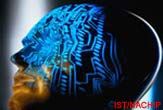Cell Phone Radiation Suckers

Worried about cell phones causing cancer? Most doctors aren't, but if that doesn't ease your mind, a company called Aulterra has a device to neutralize cell phone radiation.
The inch-wide circular patch called the Aulterra Neutralizer contains, according to the website, a "homeopathically activated combination of natural paramagnetic and diamagnetic elements," which you stick on your cell phone to nullify radio waves otherwise destined for your brain.
The Aulterra Neutralizer sells in packs of three for $25 on the Web and at health-conscious stores such as Whole Foods, where the clientele—at least according to market research—is said to possess above-average intelligence.
How can this patch stop your cell phone's omni-directional radio waves from penetrating your body, particularly when the patch on the back of the phone, on the side farther from your head?
It's a matter of how you interpret those pesky laws of physics.
Absorbing only the bad waves
Physicists argue that Arm & Hammer baking soda would work equally as well at not soaking up radio waves, and at a fraction of the cost. Even if the concept were physically plausible, a neutralizer would neutralize the very waves carrying your phone conversation. Can you hear me now?
Sign up for the Live Science daily newsletter now
Get the world’s most fascinating discoveries delivered straight to your inbox.
Aulterra's president, Kim Dandurand, countered via e-mail, however, that the neutralization eliminates the detrimental biological effects from radiation. This is based on research from an obscure scientist named V. V. Lednev, who proposed in the 1980s that radio waves could adversely affect health by interfering with calcium ions at a cellular level.
Lednev's theory, called the ion cyclotron resonance mechanism, has been discredited by mainstream biologists and physicists, as well as in a 1997 report by the National Academy of Sciences called "Possible Health Effects of Exposure to Residential Electric and Magnetic Fields." So it is a matter of which science you want to trust.
Noted research
The Neutralizer is built on science, but it is fringe science, such as that of retired physicist Theodore Litovitz of Catholic University, who received a lot of government money in the 1980s and 1990s to investigate low-energy radiation. Litovitz invented the radiation-neutralized keyboard back in the 1980s when the big scare of radiation was from computers.
With every new technology come worries. Remember when microwave ovens caused cancer? To Litovitz's credit, no one who used the radiation-neutralized keyboard ever got cancer from a computer.
Aulterra also posts several new studies of its product by Dr. Maria Syldona, described as a "noted DNA researcher." Just how noted is questionable. Syldona has only one paper cited on PubMed, at http://www.pubmed.gov, a search engine for over 14 million biomedical papers in over 5,000 journals from more than 80 countries. I have more than that on PubMed, and I'm not even a scientist.
Worthy of investigation
Research on cell phone radiation is ongoing, as it should be, seeing the proliferation of cell phone use. Yet study after study, such as a massive investigation of nearly a half million cell phone users in Denmark, published last year, finds no brain cancer link.
All known cancer-inducing agents—including radiation, certain chemicals and viruses—act by breaking chemical bonds. Higher-energy ionizing ultraviolet radiation can do this, but lower-energy, non-ionizing radio waves cannot.
One bit of good science on the Aulterra site is from Dr. Henry Lai of the University of Washington, Seattle. Lai conducts serious research on the health effects of low-energy radiation. He has found that radio waves might affect free-radical activity. This is certainly worth follow-up.
But Lai didn't know he was referenced on Aulterra's site; he never heard of the Aulterra Neutralizer; and when I described the product, he chuckled, as did numerous NASA scientists I talked to about it.
The intensity of radiation falls off precipitously just a few inches from the cell phone, so a headset would be the best protection from these waves should you be concerned.
Christopher Wanjek is the author of the books “Bad Medicine” and “Food At Work.” Got a question about Bad Medicine? Email Wanjek. If it’s really bad, he just might answer it in a future column. Bad Medicine appears each Tuesday on LiveScience.

Christopher Wanjek is a Live Science contributor and a health and science writer. He is the author of three science books: Spacefarers (2020), Food at Work (2005) and Bad Medicine (2003). His "Food at Work" book and project, concerning workers' health, safety and productivity, was commissioned by the U.N.'s International Labor Organization. For Live Science, Christopher covers public health, nutrition and biology, and he has written extensively for The Washington Post and Sky & Telescope among others, as well as for the NASA Goddard Space Flight Center, where he was a senior writer. Christopher holds a Master of Health degree from Harvard School of Public Health and a degree in journalism from Temple University.












